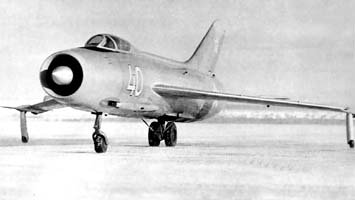apparition13
I really should change my personal text
- Joined
- 27 January 2017
- Messages
- 603
- Reaction score
- 1,095
At the beginning of the war (per wiki):They only did that because at the start of the war, carrier air groups had only a single fighter squadron and it was very rapidly realized that they needed more fighters to both escort an outbound strike and defend against an inbound strike. And even then, they didn't replace an attack squadron. They just added an additional VF squadron. Usually while either transferring the bombers from the Scouting Squadron to the Bombing Squadron or redesignating the VS squadron as a VB squadron.
- 1 fighter squadron (VF) composed of 18 Grumman F4F Wildcats
- 1 bombing squadron (VB) composed of 18 Douglas SBD Dauntless dive bombers
- 1 scouting squadron (VS) composed of 18 Douglas SBD Dauntless dive bombers
- 1 torpedo squadron (VT) composed of 18 Douglas TBD Devastator or Grumman TBF/TBM Avenger torpedo bombers
- 1 squadron of 18 Grumman F6F Hellcat fighters
- 4 squadrons of 72 Vought F4U Corsair fighter/bombers
- 1 squadron of 12 Grumman TBM Avenger torpedo bombers
Advanced F8U-3 configuration, four sidewinders and two Vought V-415A LRAAMs, which lost to the Bendix Eagle. Page 59, Naval Fighters 87, Tommy Thomason. It it could carry Vought's LRAAM, it should be able to carry Bendix's. Those missiles are all on the fuselage. Add wing pylons (like was done to the regular F-8) and 4 or even 6 might be possible. I don't know how much weight the variable incidence wings could take, but the two pylons on the F-8 were rated at 4000 pound each.I also doubt the F8U-3 would be carrying it.
If it can carry LRAAM, it can do the fleet defense mission. Better than the F-4, since it had more range. And if you really want a RIO, there were two seat proposals as well (page 11).Except the Navy didn't want a dogfighter. It wanted a fleet defense interceptor. So yes, it would still go the F-111/F-14 (or similar) route.
Grumman Super Tiger Design 98J-2, Two Sparrow (outer wing pylons), 2 sidewinder (dorsal pylons). Page 43, Naval Fighters 44, Corwin Meyer.And the Super Tiger was never intended to be anything more than a daylight dogfighter armed with cannon and two Sidewinders...
No, they couldn't carry Sparrows. They were Sidewinder armed only.
Design 98J-5, tested and flown. Center and inner wing pylons, 2000 pound capacity each, mid wing pylons 3500 pound capacity each, outer wing pylons, 1000 pound capacity each. Max total external load over 9000 pounds. Page 44, Naval Fighters 44. An APQ-50 radar with air to air and air to ground capability was to be fitted.And attack capabilities would have been similar to the Crusader. A few dumb bombs or rocket pods. Bomb trucks, they were not...
No, they don't. Again, the Super Tiger was not an attack aircraft. The Skyhawk could carry a much bigger bomb load than the F11F-2.
A-4 (D/E) max load, 8500 pounds.
Seems pretty similar to me, but the F-11 had two more wing pylons and the ventral pylons for two sidewinders. It can carry sidewinders without taking up wing stations, and it can also self-escort, which the A-4 can't.
This is the version proposed to Germany (and others) in competition with the F-104. The F-104 was used for air defense (2 wings), recon (2 wings), naval attack (2 wings), and strike (5 wings). The German Air Force wanted the Super Tiger, it would have had the same mission set as the Starfighter. Including strike, both over land nuclear and over water anti-shipping.
Ummmmm, citation? Also, Red Flag is a training exercise, not real combat. In training exercises, there are often rules in place to allow things to happen that would never be allowed in actual combat. Usually to test specific systems or tactics.Buccs would still be useful, but if F-15s and F-16s can't catch Buccaneers flying at 20 feet over Nevada during Red Flag Mig 19s aren't going to catch them 20 feet over the sea. Add Rb04s for standoff and the situation gets even worse for the Soviets.
I may be off on the fighters though. No F-16s cited that I can find (although I think I read that somewhere, but I may be wrong), but it was late 70s to early 80s so F-16s were possible. Red Flag 77-9, so September 77, was the first time that Buccs, and the RAF, flew there. They did go up against F-5s and F-15s. Including, according to this article, two F-15 kills by dropping retarded bombs in their face. Which led to adding Sidewinder to their capability, and it seems they got a few kills with those, I gather by taking out fighters attacking another of their flight, fighters who got a little too fixated on the Buccaneer they were after and forgot to check their six.
Favorite bit from the interview: they had been flying at 10 feet at 540 knots, but that left dust trails so they climbed to 20. There may be some embelishment there, but it was definitely under 100, and I have heard tales of barbed wire found on Buccaneers after Red Flag missions. I suspect if you grazed a fence at 540 you might do more than graze the ground a second later, but you know fighter pilots, they don't embellish nothin'.

